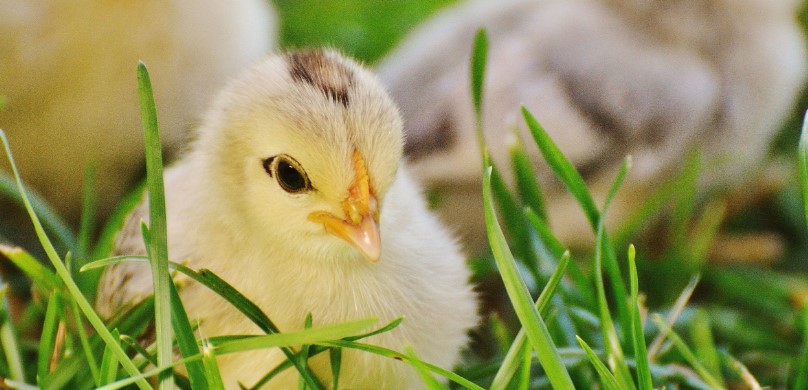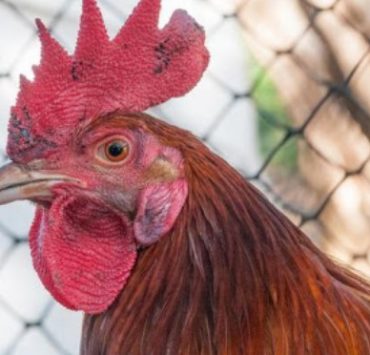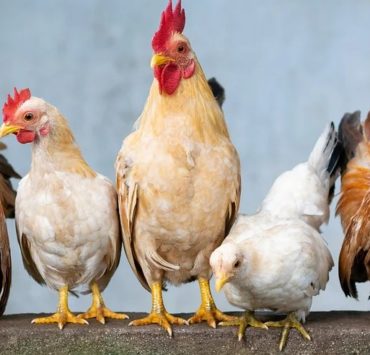
If you’re new to chicken farming, you’re probably wondering when the best time to move your new brood outside is. Ideally, you want to wait as long as you can before you do this.
Chicks are rather fragile creatures during the first few weeks of their lives. Not only can they become too chilled and potentially die from the cold, but their infant immune system isn’t strong enough yet to ward off potential diseases from parasites and bacteria.
When can baby chicks go outside? Here’s everything you need to know.
When to Put Chicks Outside
The rule of thumb when raising baby chicks is: They need to be fully feathered before you can even think about letting them venture into the wondrous world that exists outside the chicken brooder.
Warmth plays an integral role in the development of chicks. They need to be close to a heat source 24/7, whether you’re keeping them in your garage, shed, or chicken coop.
As they continue to grow and their feathers start to form, you’ll notice them moving further away from the heat source. That’s when you can start reducing the chick brooder temperature gradually.
Maintain it at a consistent 100°F, to begin with, and then reduce the brooder temperature by week. An interval of 5°F would be ideal.
Once they’re fully feathered, you can take them outside for a short time – 15 minutes at the most – for some playtime in a secure enclosure. You don’t want them to wander off. You can then increase their outdoor playtime by five or so minutes every week until they’re strong enough to stay full time.
Keep in mind that there’s no definitive timeline on when you should put them outside. Different breeds of chicken feather fully at different rates.
Therefore, it is important to identify the specific breed of chicks you have to determine when the most appropriate time to move them outside is. There are generally two approaches you can use to get them acclimatized to the outdoors.
1. The Gradual Method
On the one hand, we have chicken farmers who prefer to use a gradual approach to moving their baby chicks outside. Once they no longer need a heat lamp or chick heat plate to keep them warm, move the entire brooder to a cooler part of the garage, shed, or chicken coop.
Then, during warm days when the sun is out, you can let them spend an afternoon outside before returning them to the brooder at night. Keep in mind that you should only do this when all the chicks have developed most of their feathers. This is usually when they’re around three to four weeks old.
Do this indoor/outdoor routine for several consecutive days until they get used to the outside world. Keep an eye out for any signs of distress, like cheeping too loudly for an extended duration or huddling together. It might be because they’re too cold.
If that’s the case, move them back inside and turn on the heat lamp. Once they’re around five weeks old, they can safely go outside full-time without relying on a heat source.
2. The Fast Method
An alternative approach involves hardening off your baby chicks quickly by taking them outside without any transition period. This is done when they’re around two weeks old. However, like with the gradual approach, if you notice any signs of distress, take them back indoors or provide them with a heat source outside.
Regardless of the technique you choose to go with, ensure that you’ve prepared their outdoor space. This involves setting up their water source and feeder, attaching a run for them if you intend to have one, and elevating their coop eight to 12 inches off the ground.
You also need to train them to go into the coop at night. This helps to keep them safe from predators if they sense danger lurking. The best way to teach them would be to keep them inside their coop for three to four days every week until they learn where “home” is.

How to Care for Baby Chicks
A lot goes into caring for a brood beyond simply providing a heat lamp for baby chicks. Here are some useful tips on how to care for chickens right from their infancy stage.
Keep It Simple
As fragile as they may be, tending to a brood of baby chicks isn’t as difficult as you might think. All you need is a draft-free chicken brooder, nutritious, high-quality chick starter feeds, some clean water, and a chick heat plate or heat lamp if you have dozens of baby chicks in your pen.
Additionally, ensure that the water source you use is shallow. The last thing you want is for your chicks to drown in it when attempting to quench their thirst. Use one gallon-sized waterer for every six chicks to avoid crowding. Be sure to clean it daily as well.
Temperature Control
Baby chicks need a lot of warmth to survive. They might die if their environment gets too chilly. Ensure that you maintain the temperature at 100°F until they’re fully-feathered. Then, reduce the temperature by 5°F every week until they’re six weeks old. That’s when you should switch them from starter feed to grower mash.
Use Red Bulbs
Here’s the thing. When chicks spot blood, there’s something about it that attracts pecking. You’ll be surprised at how cheerfully chicks will peck each other to death without any hesitation. Unlike white bulbs, red light masks injury and blood, so there’s no danger of cannibalism or picking at each other.
Timing Is Everything
The number one cause of chick mortality is cold exposure. Keep your baby chicks indoors until they are fully-feathered before taking them outside.
If you notice any signs of distress, take them back indoors, or add a heat source. If, however, there’s snow on the ground, it doesn’t matter how old they are – keep them inside. You should only introduce them to the great outdoors if the sun is out and temperatures are warm enough.
For more information on bird health, use our online Vet Chat to talk to any of our qualified avian veterinarians today.



